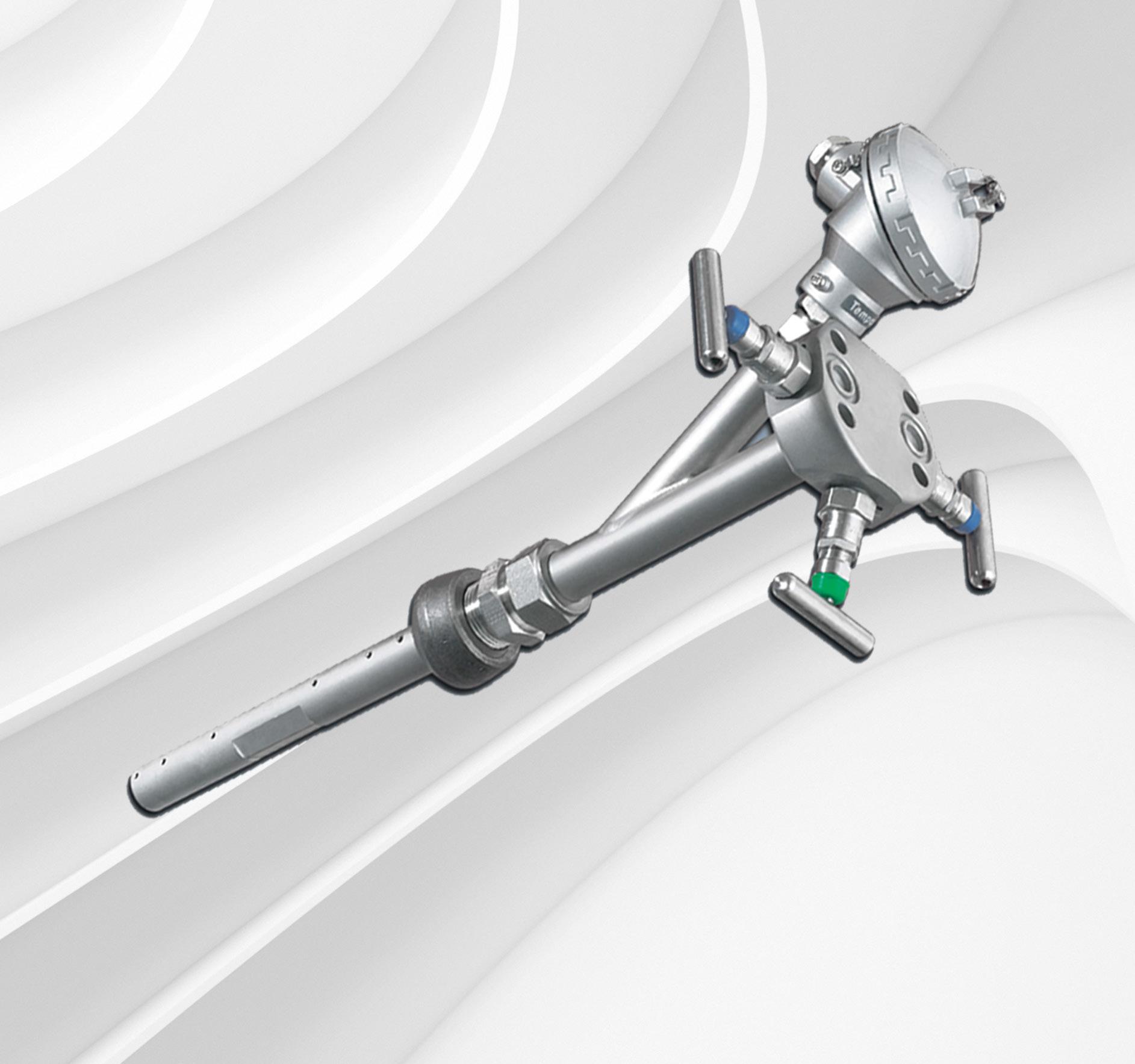
18 minute read
Products
McMenon Averaging Pitot Tubes
The MAPT is a multiport self-averaging flow meter with a design based on the classical pitot tube concept of fluid flow measurement. It produces an averaged differential pressure (DP) signal proportional to the square of the flow rate. The DP output is normally piped to a Differential Pressure transmitter in order to generate an electrical signal proportional to the flow rate.
Advertisement
The outer impact tube has a number of pressure sensing holes facing upstream which are positioned at equal annular points in accordance with a log-linear distribution. This pressure is represented at the head as the high pressure component of the DP output.
The low pressure component is generated from a single sensing hole located on the downstream side of the outer impact tube, measuring static pressure. The MAPT is an improvement on the round sensor design due to the unique profiled flats which are positioned around the downstream hole in order to define the separation point at which the flow lines separate as the fluid passes around the outer impact tube.
This feature creates a stable pressure area at the downstream pressure sensing hole thereby maintaining a more constant flow coefficient at high velocities enabling a very wide range of flow measurement (turndown). W ith more large-scale urban developments planned and implemented, the scale and depth requirements of the foundation pit are increasing. Real-time monitoring systems play a significant role during the foundation pit excavation process, providing for the operator real-time data such as the deformation and structural condition of foundation pit, to avoid the occurrence of onsite accidents.
When compared with other monitoring methods, ZHYQ real-time monitoring system boasts extremely high accuracy and has the advantage of being more adaptable and less affected by variable weather conditions.
Sensor distribution and the choice of system model can be tailored to suit various depths and scale of the foundation pit. All sensors used are recommended to be deployed before construction.
The monitoring system layouts relay on site structure information, with all sensors used being deployed before construction. The main suite of foundation pit monitoring includes foundation pit structure support monitoring, monitoring of surrounding structures – building settlement, tilt and crack monitoring – among other features.
The main equipment deployed within the monitoring system includes monocrystalline silicon hydro levelling sensor, inclination sensor, osmometer, crack meter, displacement sensor and bolt pre-tightening force sensor.
ZHYQ offers a great range of products that enable a safe and precise monitoring of stress/strain of the foundation pit, settlement, displacement and other parameters which can be tailored to specific working environments and requirements. By using the system monitoring centre, ZHYQ ensures that it implements a unified and centralised management of all front-end sensor equipment, the IOT gateway, data acquisition equipment and the IOT monitoring cloud platform.
AMS Instrumentation
ams-ic.com.au
Monitoring deep foundation pit structure in real time

ZHYQ
zhyqsensor.com



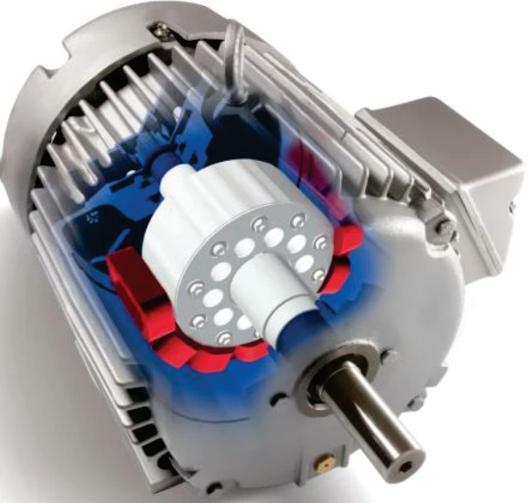
The importance of greasing moving bearings
The importance of greasing bearings when they are moving is often not understood or is overlooked. There is a possibility that the importance is understood but is not done due to practical constraints such as moving machinery and OH&S regulations.
Grease introduced into a stationary bearing will take the path of least resistance. Many housings only have one grease entry point. Grease is typically pumped in by a high-pressure grease gun or lube system at a higher than necessary volume, in a short time. It is hoped that the new grease will make it into the bearing and remove the older grease. Some of the grease may enter the bearing but if there is any sort of constraint to its entry, it quite possibly may instead simply pass out the closest seal.
Older grease in the bearing will tend to block the entry of new grease. This older grease is likely to be on the peripheries of the rolling surfaces, not on the areas of contact where lubrication is needed. This means that the older grease, which may be oil depleted, additive-depleted, contaminated or oxidised, remains. Not only is it limited as a lubricant, but its presence impedes the entry of new grease into the rolling elements. In short, the bearing may not have been lubricated even though grease has been added to the housing.
The optimal time to grease a bearing is when it is moving. A moving bearing has less resistance to grease input. Slow and progressive grease input at low pressure into a moving bearing allows the grease to be taken up into the moving bearing elements. Grease added slowly and regularly will provide continuous purging of grease that has reached the end of its useful life. As a result, older grease is prevented from remaining in the bearing long enough to become depleted or contaminated, or worse, to harden, and become a lubrication maintenance problem.
Correctly lubricating a bearing in this manner will also reduce grease requirement as the grease is more efficiently used. The actual amount of grease needed to lubricate the contact surfaces is quite small. To achieve this improved efficiency, however, the grease must be introduced slowly and continuously. Lower grease use results in less contamination clean up, being better for both the environment and costs.
The benefit of lubricating bearings slowly and continuously, when they are moving, can be measured in terms of reduced failures and productivity increases.
GreaseMax lubricators provide an effective and proven method of reliably providing continuous lubrication in all industries and operating environments.
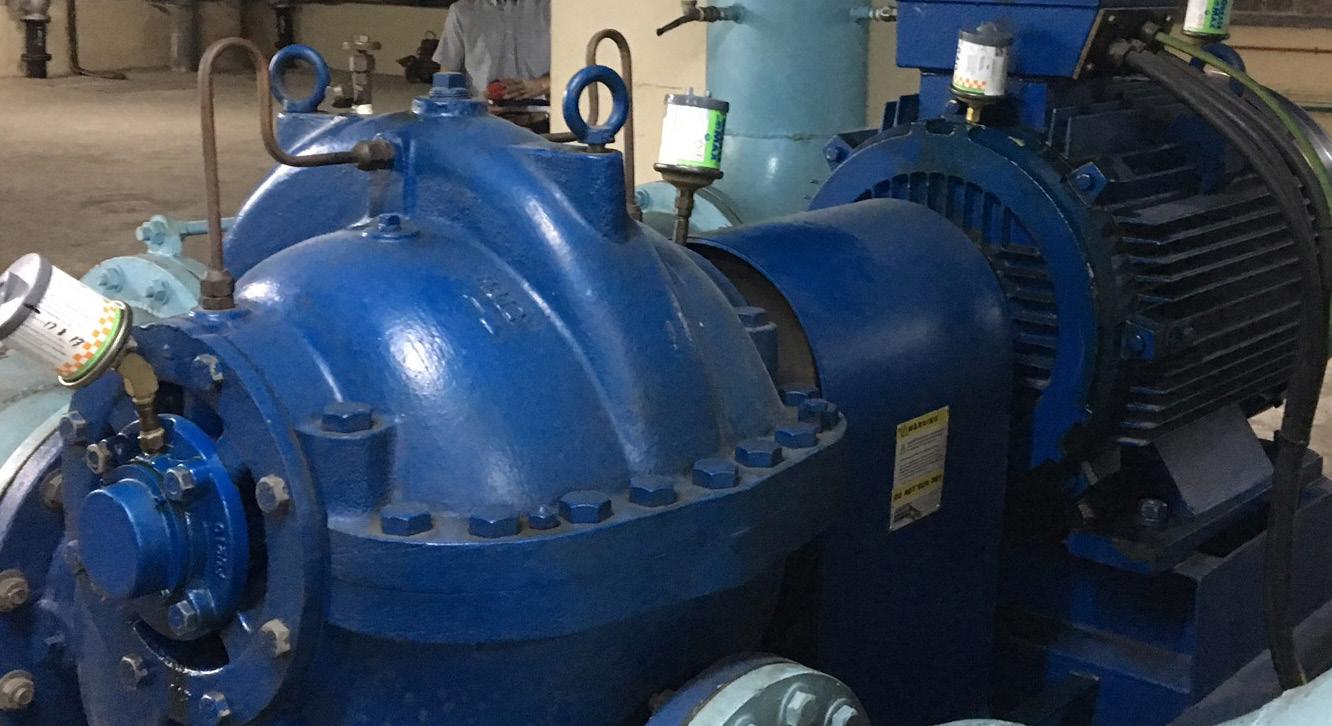
Delta International Sales
dis.com.au

TURCK has achieved IEC Ex and ATEX approval for its TBEN-S and TBEN-L version IP67 block I/O modules to be used in Zone 2.
The automation specialist is now the first supplier to enable cabinet-free decentralised automation solutions with IEC Ex and ATEX approvals. This significantly reduces labour costs as well as slashing wiring and commissioning time. When used with IP67 IMC interface devices, it is
TURCK wins approval for Ex area
now possible to have cabinet-free connection of intrinsically safe signals from Zone 0 or 1.
Users can also implement cabinet-free safety, RFID, IO-Link, control or cloud solutions directly in Zone 2, since almost the entire TURCK Industrial Internet of Things (IIoT) ecosystem is offered in these designs. Users must install the TBSG-L, TBSG-S or IMC-SG protective housings when implementing the I/O modules in Zone 2; they provide protection against shock and from sparks caused by unsafe removal of cables. The range of applications with Ex zones includes painting, bottling or pharmaceutical plants as well as food industry and wood-processing plants.
The ARGEE field logic control software in the I/O modules enables self-contained applications to be implemented directly in Zone 2. This is particularly useful for retrofit applications because existing controller systems do not have to be changed. Condition monitoring and data analysis via cloud systems can now also be implemented from Zone 2 without the need for a control cabinet.
TURCK
turck.com.au

High ambient heat cabling range delivers durability and reliability Reduce manual fatigue and increase productivity with Got Spring Balancers
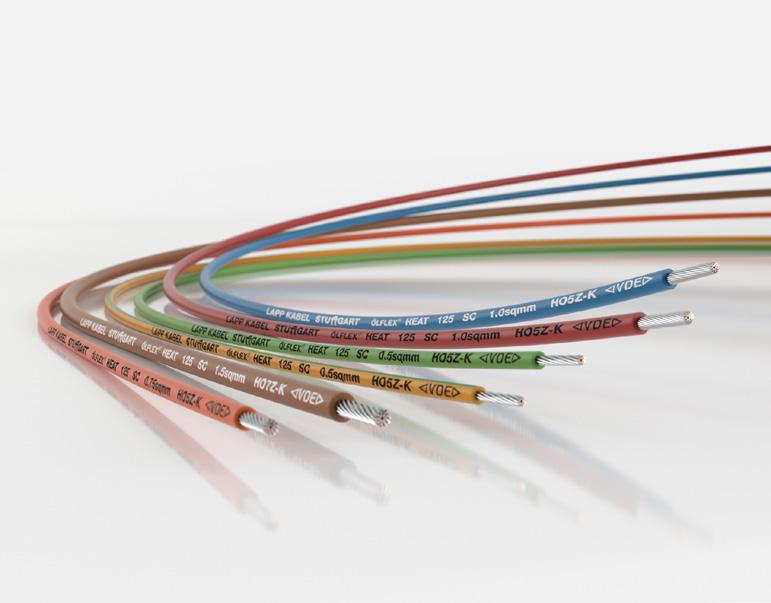
Expanded ranges of high-ambient heat cabling are being stocked locally by LAPP Australia to assist companies in their Industry 4.0 digital transformation by shortening delivering times and increasing technical backup services for the globally respected ÖLFLEX® range.
The LAPP ÖLFLEX® Expanded Ambient Temperature cable range is engineered for demanding industrial environments including foundries, commercial baking equipment, food and beverage heat processing technologies, steel mills, mineral processing involving heat processes, glass factories, furnaces, other high temperature applications, says LAPP Australia Managing Director, Simon Pullinger.
The heat resistant wire features silicon and finely stranded tinned copper for high quality functionality and high levels of heat protection. High temperature cable options include resistance to UV-radiation, abrasion, and tears. Further options include outstanding resistance to oil and weather, and high flame resistance.
“As with the broader ranges of LAPP ÖLFLEX® cables, our heat resistant wire cables are flexible and stand up to harsh industrial environments to keep factories and processing plants running,” Pullinger added.
The Australian branch of the German global leader in cabling and connectivity solutions, LAPP Group, has more than doubled its inventory of locally stocked product lines, from 1,500 to more than 4,000, since setting up in this country just four years ago. Over that time, LAPP Australia has also expanded staff nearly fourfold (from six to 22 specialists and growing) to provide industry-best levels of supply service and engineering expertise.
“Our service levels – which have set out from day one to be the best available – are a major advantage to companies seeking not only the best quality cabling solutions, but also similarly excellent engineering services vital to integrated electrical, process and automation engineering solutions,” according to Pullinger.
The ÖLFLEX® HEAT cables feature: • The ability to maintain electrical and mechanical properties in extreme heat and cold to ensure uninterrupted power in severe conditions. • Durable materials, including crosslinked polymers, silicone, fluoropolymers, and fibreglass. • Cross-linked polymer cables that deliver increased thermal resistance, as well as resistance to corrosion, abrasion and a range of operating fluids like solvents and detergents. • Silicone cables that exhibit hydrolysis and UV resistance. • Resistance to chemicals.
The LAPP Australia ÖLFLEX® range includes single and multi-core cables in different diameters, weights, temperature ratings, and resistance types.
LAPP Australia
lappaustralia.com.au W ant to reduce fatigue and injury? Got Spring Balancers is Australia’s top online spring balancer specialist, boasting one of the largest ranges of Zero Gravity Balancers, Spring Balancers, Hose Reel Balancers and Retractor Balancers.
All spring balancers are designed to be ergonomic, with the sole purpose of increasing safety and reducing strain, especially caused by highly repetitive actions that require the use of tools.
Got Spring Balancers’ range is ideal for work environments where manual fatigue caused by repetitive lifting – even of low weight bearing tools – can cause micro strains that can have longterm effects on staff performance. Improvement in the reduction of wear and tear on expensive equipment is an additional advantage of using Got Spring Balancers.
The Got Spring Balancers range covers weight classes varying from 500g to 120kg for heavyduty applications. Specialist jobs may require hose reel balancers and retractor balancers, all of which are also available in varying weight classes.
Hose reel balancers are a relative of the simple retractor balancer. They hold the same weight, and operate by the same principle, using an internal spring. The improvement on the basic retractor lies in their incorporation of a pneumatic hose as support cable.
As pneumatic hoses are essential components of air tools, this balancer performs a dual role: protects your operator from repetitive motion injuries and keeps the workstation clear of a trailing pressurised hose. This reduces the likelihood of trips and falls, as wells as punctured air hoses and the resulting hazards.
Retractable tool balancers are exactly what the name suggests. At rest, the tool hangs slightly below the head of the balancer. When the operator wants to use it, it is pulled down to unwind the cable housed inside and bring the tool to bear. The cable is under continuous pressure from
an internal spring, which will spring back to its resting position once the operator releases it.
Got Spring Balancers ships its products Australia-wide at no charge. Purchases can be paid using all major credit cards or through PayPal.
Got Spring Balancers
gotspringbalancers.com.au
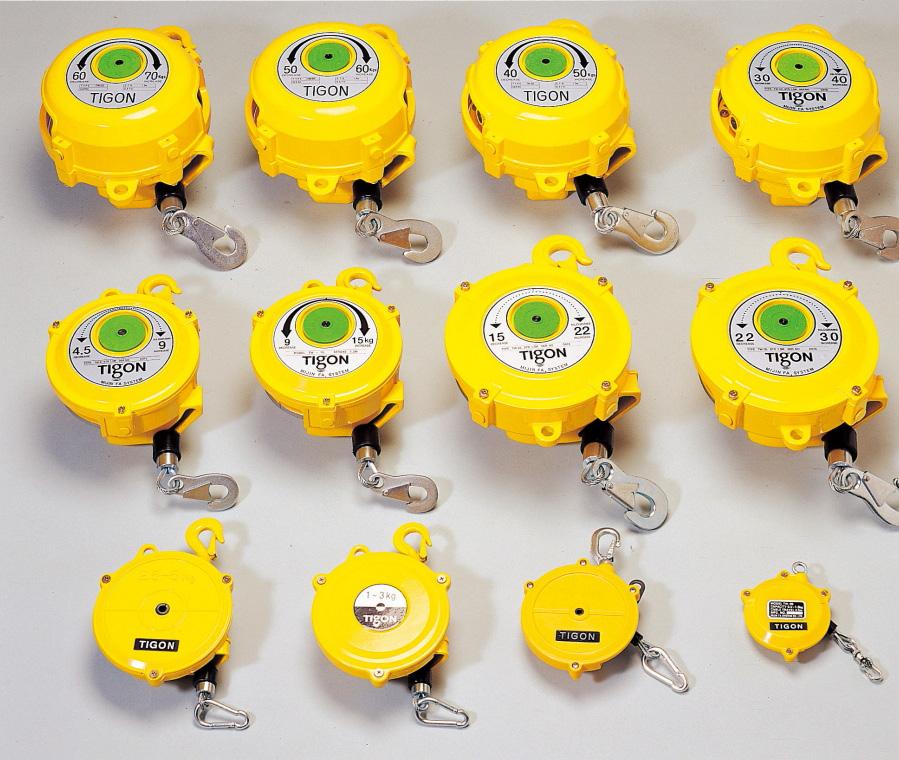

Treotham and Wenglor deliver top of the art 2D/3D profile sensor
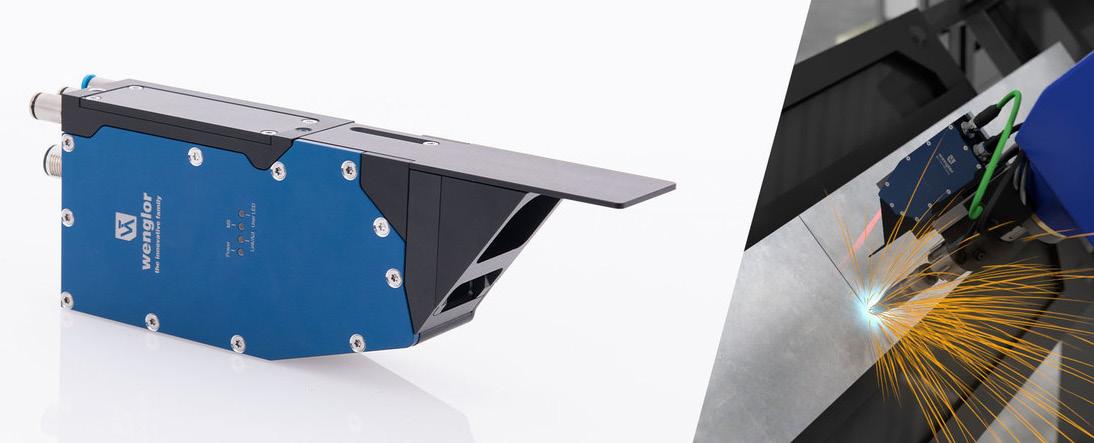
Automated weld seam tracking in robot welding cells is a complex task in a harsh industrial environment. The micrometer-accurate detection of the guide point with different types of joint by 2D/3D profile sensors is one of the most effective solutions for this challenge. In combination with Wenglor’s uniVision software, the new weCat3D MLZL 2D/3D profile sensor from Treotham not only combines the necessary precision and profile quality, but also offers convenient installation, integration, robustness and user-friendliness.
A 2D/3D profile sensor is made for welding robots. The slimline housing of the MLZL with integrated cooling and rinsing enables easy and space-saving installation directly on the welding torch. Thanks to the small housing dimensions of only 33 × 183 × 69.8mm, the robot can operate in narrow corners.
Wenglor Product Manager, Dr. Sascha Reinhardt, explained that Wenglor MLZL 2D/3D profile sensor from Treotham does not require any additional protective housing, nor does it need to be tilted for alignment.
“The design also offers sufficient protection against welding spatter and disturbing ambient light,” said Dr Reinhardt.
“Despite the harsh industrial environment, the welding sensor provides high-quality profiles for precise joint detection. Optionally equipped with a red or blue laser, users can choose between three laser classes: 2M, 3R or 3B.”
The MLZL relies on the advanced laser technology of the weCat3D series, delivering outstanding profile quality for optical seam tracking.
“This sensor has been specially adapted and optimised for the high demands in welding robots, but in particular for the complex task of optical tracking of weld seams – both in terms of hardware and software,” added Dr Reinhardt.
Wenglor engineers tested and developed the special triangulation sensor together with customers from the welding industry as part of an Early Adopter Program (EAP). The feedback and know-how collected from this program flowed into the MLZL.
“We were able to incorporate many practical experiences directly into the development, obtaining extremely precise information in advance about what is important in automated welding processes, where users face the greatest hurdles and what their wishes are,” explained Dr Reinhardt.
Software update with new function: uniVision 2.5.0 for welding applications.
In its current update, the configurable standard software uniVision receives a stand-alone module specifically for weld seam tracking. For users, this means that welding applications can be set up in just a few clicks.
“Thanks to the robust algorithms, tracking points can be reliably determined even in the event of faults in the joint course, such as with datum points. Predefined templates, where all common joint types are saved, significantly reduce the configuration work,” explained Dr. Reinhardt.
According to Wenglor, the results can then be visualised on a web-based basis. Several interfaces are available for direct integration into robot controls from Kuka, Fanuc, ABB, Kawasaki and Yaskawa as well as their software. In concrete terms, this means that welding processes can now be implemented with less effort, more functions and better results.
The new combination of software and hardware offers flexible welding solutions for every user. Wenglor always differentiates between applications with or without robot integration. The most convenient and comprehensive system consists of a sensor, control unit with pre-installed uniVision software application and optional robot interface.
“As part of the EAP, the system was developed as a complete solution. There are, however, other available combinations. We can offer the right solution to suit every individual customer requirement,” Dr. Reinhardt continued.
The parameterisable uniVision standard software is used to analyse images and height profiles in the field of industrial image processing. Two and three-dimensional data from smart cameras, vision systems, smart 2D/3D profile sensors and IPCs (control units) with 2D/3D profile sensors can also be evaluated. Up to 25 different software modules and different templates are available to users in total depending on the selected hardware.
The Highlights at a Glance
• Compact housing (33 × 183 × 69.8 mm) • Robust design with high IP67 protection • High profile quality (1,280 points per profile) • Large working range from 74-158 mm • Large measuring range in
X from 39 to 62 mm • Integrated cooling and rinsing • Laser class 2M, 3R or 3B • Red light or blue light • Special uniVision software module for weld seam tracking • Robot interfaces for ABB, Fanuc,
Kuka, Yaskawa and Kawasaki • Industrial interfaces PROFINET and EtherNet/IP™ for easy integration into controls
Treotham
treotham.com.au

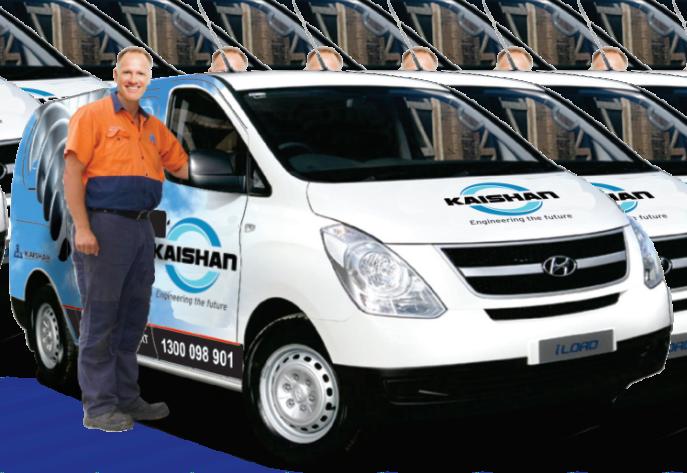


OneCNC makes manufacturing easy
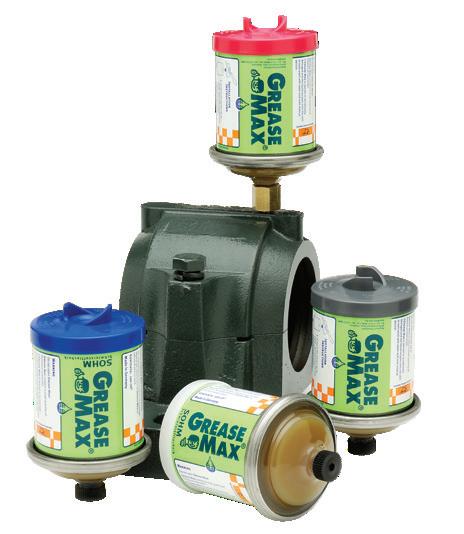
OneCNC CAD CAM works directly with manufacturers and the leaders in machine tool innovation to advance the industry. OneCNC has created userfriendly software platforms that are revolutionizing the manufacturing industry, supplying specifications in terms of tolerances and finishes allowing characteristics upon designers or the customer’s initiative.
The manufacturing industry is evolving at such a rate that customers demand flexible production with a lean manufacturing focus. The revolution industry 4.0 requires all machines to have a networking process in which the product is able to modify the method if needed in order to build a flexible production line. OneCNC CAD CAM leads with a forward thinking approach to manufacturing that allows for modification according to each specific product. Each product can also be personalised. This is a huge step in the manufacturing industry which gives companies the opportunity to optimize their resources and those in the supply chain while providing the customers with a complete quality product which can be easily adapted to the needs of current society.
OneCNC is easy to use and offers powerful programming for any CNC machine tool. OneCNC offers functional solutions that include programming for 2-5 axis milling, 2-5 axis turning, 2-4 axis wire EDM, 2 axis Profiler, multitasking mill-turn machining, and B-axis machine tools. You can streamline your operations with the powerful and flexible OneCNC, which is valued by CNC programmers for its extensive wizard driven machining cycles, tool control, and capacity to fully support the entire shop.
OneCNC has seamless CAD to CAM transfer and directly imports part models from almost any source, fully intact, without the need for programmers to edit or rebuild geometry. OneCNC directly machines from any combination of geometries of solids, surfaces, wireframe, or STL providing you with complete manufacturing flexibility. Starting with 100% complete and accurate part geometry, it makes programming simple and the process much more efficient.
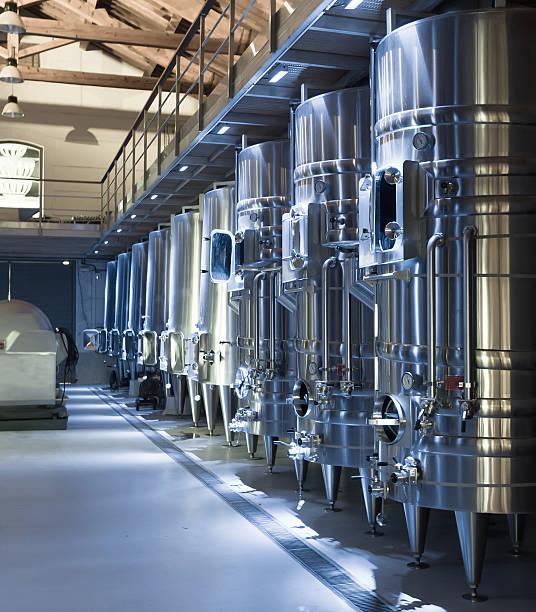

automatic lubricator
simply superior! single point lubrication
NO batteries NO maintenance
Less maintenance downtime Increased productivity
www.dis.com.au
OneCNC tente.com.au
The SpecialiSTS in elecTronic DriveS for over 30 yearS
• Repairing of complex electronic boards, including obsolete boards that are no longer supported by vendors • Design and construction of multi-drive systems • Professional Control Systems Integrators • Repairing/retrofitting of electronic AC, DC and servo drives • Laboratory & Clean Room • Large Stocks of Spare Parts • Australia wide 24 hour service Datafactory
Tente’s New Innovative “Anika Evo” Range of Sustainable Twin Wheel Castors - Made from Renewable Sources
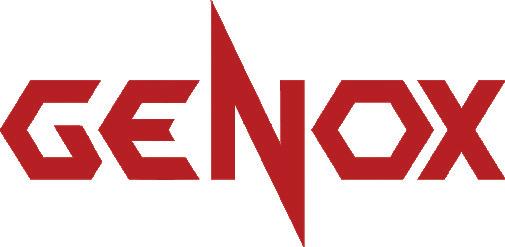

A unique castor by Tente, the “Anika Evo” is recyclable & non toxic
With the surge in consumer demand for more and more sustainable products, Tente Castors & Wheels have now developed the Anika Evo twin wheel castor. The Anika Evo is made from castor oil and castor seeds, sourced from the world’s largest processor of castor oil. Tente uses biobased Polyamide (PA11) instead of fossil based traditional PA. PA11 is made from ricin oil which comes from castor seeds gown and harvested in India and can be recycled and is non toxic.
The Anika Evo’s (short for Environment) advantages include; no deforestation, profitable for farmers especially in poorer nations and no competition with food. The beans are crushed to make 45% oil and 55% cake and reduces the dependence on fossil oil. The Anika Evo castor range is made from up to 98% bio sourced material.
Customers already using the Anika range, can now opt for the Evo range which is identifiable with a visible green dot. The Anika Evo range is available in 55mm (65mm diameter available in not-so-distant future). Durability and mobility are the same as the standard Anika range. Brake option, hard wheel option, soft wheel option, EN12528 compliance, shock resistance and wide range of injected colours available in the new Anika Evo range.
Contact Tente Castors & Wheels for further information on this unique range of Environmentally Friendly castors.
Tente
tente.com.au
vertical shredders. Built tough for the most demanding of shredding applications.
HEAVY DUTY VALUE FOR MONEY CIRCULAR ECONOMY
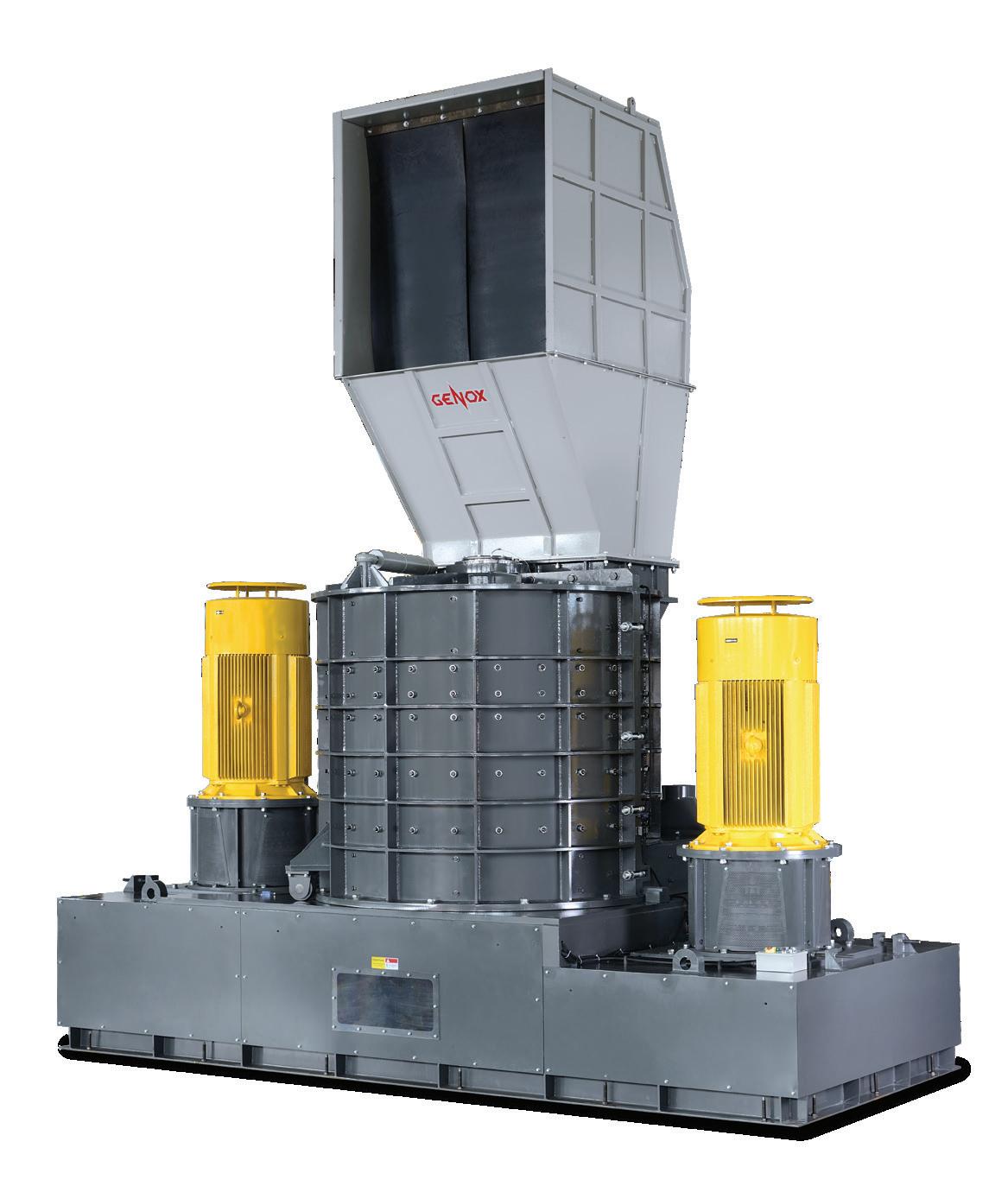
• Aggressive size reduction and densification of preshredded materials • Clean, high bulk density output for easy sorting and transportation • C&D waste, scrap metal and other heavy duty applications • Available with up to 440kW of power • Industry-proven and built tough for Australian conditions
To find out more, call: 03 9706 8066, Email: sales@appliedmachinery.com.au, or visit: www.appliedmachinery.com.au






